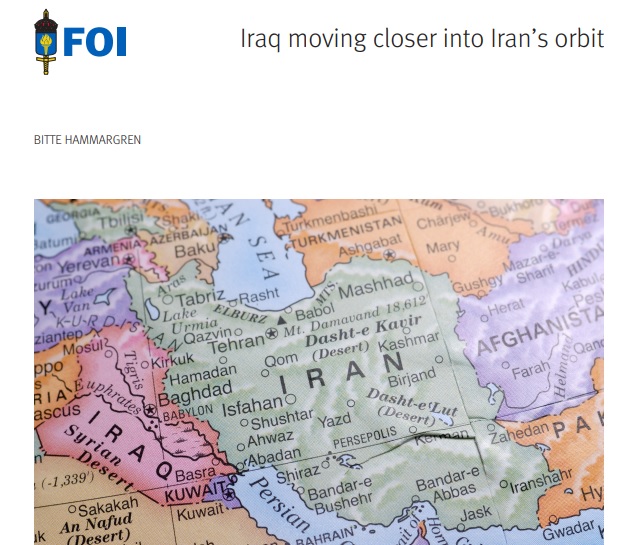Iraq risks becoming a battlefield in a major proxy war, pitting the United States and Iran against each other.
Why Iran is not likely to loosen its grip over its Western neighbour
Modern Iraq suffers from a legacy of dictatorship, sanctions, and war, together with today’s political weakness and economic mismanagement. This makes Iraq susceptible to a resurgence of Sunni jihadism as well as to the power struggle between the United States and Iran – with Iran holding the upper hand. This report aims to describe why Iran is not likely to loosen its grip over its Western neighbour. It also draws attention to the formation of Iraq’s paramilitary Popular Mobilisation Forces, the PMF, formed during the battle against the so-called Islamic State (IS), as a tool for promoting Tehran’s geostrategic interests in the Arab world. Notably, the PMF, which increasingly resemble Iran’s Revolutionary Guards Corps, function as a parallel military structure in Iraq. A popular uprising, starting in the autumn of 2019, constitutes a major challenge to Iran’s influence, but anti-American sentiments run deep within the political elite and among various layers of society.
Military escalation
The military escalation between the United States and Iran on Iraqi soil that began in the end of 2019 indicates that the country still faces the risk of becoming a battleground for a major proxy war, which could spread to a regional war. Iran continues to benefit from the instability in Iraq by filling power vacuums for its own strategic purposes. This report is limited in scope to central and south Iraq and does not encompass the disputes between the central government in Baghdad and the Kurdish Regional Government in Erbil. Timewise, the main focus is the period from 2014 until present. Chapter 2 provides a brief historical overview of Iraq during recent decades. Chapter 3 describes Iraq’s oil economy, corruption, and the grievances behind the protests that erupted in the fall of 2019. Chapter 4 discusses why identity-based politics in Iraq make it prone to Iranian influence. Chapter 5 elaborates on the PMF. Chapter 6 summarises the major findings and gives a brief future outlook.

